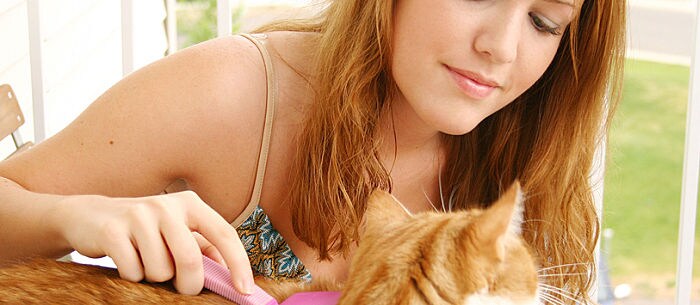One of the key benefits of owning a cat is their low maintenance, self-grooming nature. However it is this very act of washing themselves that causes cat hairballs. While hairballs cannot be avoided completely, there are steps you can take to limit their frequency.
Find out more about what the slimy things are and how you control their occurrence:
Cats groom and wash themselves by licking their fur; this means that they end up swallowing a lot of hair. Most of the fur they swallow passes through their digestive tracts and is expelled in their stool. However, it is normal for some to build up in their abdomen, and this is expelled through throwing it back up. These cat hairballs usually appear cigar-shaped because they take on the shape of the oesophagus as the cat brings them up.
Cat hairballs occur more frequently during the shedding season, in cats with long hair and in cats who groom others as well as themselves. However, if retching up a cat hairball happens more than twice a month, it could be a symptom of a more serious gastrointestinal problem.
If you’re worried your cat is throwing up hairballs too often, take them to the vet to rule out a serious medical issue, such as an obstruction in the intestines, inflammatory bowel disease or a food allergy. Once you know there is no medical issue in play, there are a number of things you can do to minimise cat hairballs. The best treatment is prevention.
How Can You Lessen Their Occurrence?
Preventing hairballs in cats doesn’t require fancy medications or an extensive time commitment. Some things you can do to make your cat less susceptible to hairballs include:
- Groom Your Cat
Brush and comb your cat often to remove loose, dead hair before they get the chance to swallow it.
- Get Out The Lint Roller
Follow up brushing with a lightly damp cloth or lint roller brush to remove any excess fur left behind, or try wiping them down with a baby wipe.
- Try Specific Medication
Use a pet laxative, such as Laxatone or Lax’aire, once or twice a week.
- Head to The Pet Store
Hairball remedies are readily available at the pet store. If your cat doesn’t like the taste, you can also try plain petroleum jelly. Both should be ingested on an empty stomach.
- Add Some Fibre
Hairball-control dry foods have added fibre, which may also help to move fur out of the stomach before it can accumulate excessively.
- Enhance Cat Food
Create hairball-control canned food by adding psyllium powder to canned food, but you should discuss the amount with your vet before starting.
Remember that your cat probably enjoys hacking up hairballs about as much as you relish cleaning them. So, helping to diminish their occurrence will be beneficial for you both!
*This article is for general informational purposes only. It is not intended nor implied to be providing medical advice and is not a substitute for such advice. The reader should always consult a health care provider concerning any medical condition or treatment plan. Neither Care.com nor the author assumes any responsibility or liability with respect to use of any information contained herein.

